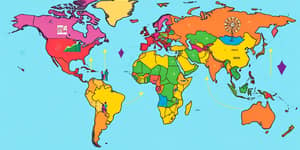
In an era where financial markets and international politics are inseparable, institutions must continuously adapt. The year 2025 has ushered in a series of complex challenges, from sudden outbreaks of armed conflict to sweeping changes in trade policy. These factors no longer represent fleeting concerns; they are integral drivers shaping risk and return. Institutional investors, from pension funds to endowments, now confront an environment where threats to stability can emerge overnight, and traditional diversification strategies may not suffice.
Against this backdrop, portfolio managers are compelled to rethink their playbooks. No longer is it enough to rely on historical correlations or static asset allocations. Instead, institutions are embracing dynamic approaches that integrate geopolitical intelligence, stress-testing, and flexible capital deployment. By weaving real-time analysis into decision-making processes, investors seek to maintain resilience and uncover opportunities amid turbulence.
The current geopolitical landscape features a convergence of factors challenging global financial stability. At the heart of these shifts are enduring regional conflicts, renewed protectionist trends, and fluid capital movements. Each element exerts unique pressure on markets, creating a mosaic of risk drivers that demand careful monitoring.
In particular, energy markets remain highly susceptible to supply disruptions. Meanwhile, policy shifts in major economies can ripple through complex supply chains, affecting everything from commodity prices to corporate earnings. Understanding these dynamics is crucial for institutions seeking to align their long-term objectives with an unpredictable political climate.
Geopolitical shocks can trigger acute market volatility, often with disproportionate effects on certain sectors and regions. Equity markets may see rapid sell-offs, while bond yields move sharply as investors reassess credit and liquidity risk. Even commodities, traditionally hedges against inflation and unrest, can exhibit unexpected correlations with equity performance.
Emerging market actors, in particular, face amplified vulnerability. Their reliance on foreign investment and debt denominated in reserve currencies intensifies exposure. A sudden change in policy or a diplomatic spat can cascade into capital flight, currency depreciation, and abrupt tightening of borrowing conditions. Such episodes underscore the need for nuanced risk modeling that accounts for geopolitical catalysts.
Navigating this intricate environment requires a multi-layered defense. Diversification remains a cornerstone but must evolve beyond simplistic asset-class buckets. Incorporating alternative strategies, tactical tilts, and regional risk overlays can enhance resilience. Moreover, liquidity management becomes paramount; being able to raise or deploy capital quickly can differentiate between a temporary drawdown and a permanent loss.
Advanced institutions are also investing in predictive analytics and scenario planning. By simulating a range of political outcomes—from diplomatic breakthroughs to escalatory gridlock—investors can stress-test their portfolios against extreme but plausible scenarios. This forward-looking stance helps identify vulnerabilities before they crystallize into realized losses.
Faced with increasing uncertainty, prominent endowments and pension funds are recalibrating exposures. Many are choosing to reduce exposure to international markets where policy shifts and conflict risks remain elevated, even when valuations appear attractive. This cautious stance reflects a preference for relative predictability, favoring core domestic allocations that benefit from stable regulatory regimes.
Concurrently, some institutions are reengaging nontraditional hedges. Allocations to precious metals, particularly gold, are on the rise as investors seek refuge from currency volatility. Strategic positions in energy-related assets—ranging from oil infrastructure to renewable energy ventures—also feature more prominently, offering a blend of income potential and geopolitical diversification.
At the same time, a select group of sophisticated managers is exploring private markets in jurisdictions with robust institutional frameworks. These allocations typically come with longer lock-up periods but can provide reduced correlation to public market gyrations, thus enhancing the overall portfolio's risk-return profile.
An examination of recent data underscores the material impact of geopolitical events on institutional portfolios. The following table summarizes core metrics, providing a snapshot of market reactions and risk adjustments during periods of heightened tension.
The coming years are likely to see a more multipolar and transactional global framework. With the growing influence of BRICS+ economies and new trade blocs challenging the dominance of established alliances, investors must adopt a broader aperture. This means evaluating geopolitical alignment as a core component of country and sector selection.
Moreover, the fragmented and transactional global order suggests that financial flows will follow new corridors, dictated by political affinities and strategic partnerships. The heightened U.S.-China power competition exemplifies the kind of systemic rivalry that can reshape entire industries, from semiconductors to green energy. Anticipating these tectonic shifts and embedding them into investment frameworks is not merely prudent—it is essential for long-term success.
Institutional investors who marry robust geopolitical insights with disciplined portfolio construction are better positioned to harness yield opportunities and protect capital. By fostering a culture of agility, informed by both qualitative intelligence and quantitative rigor, these organizations can transform risk into a strategic advantage. Ultimately, embracing change with conviction and creativity will define the next generation of successful institutional portfolio management in an unpredictable world.
References













